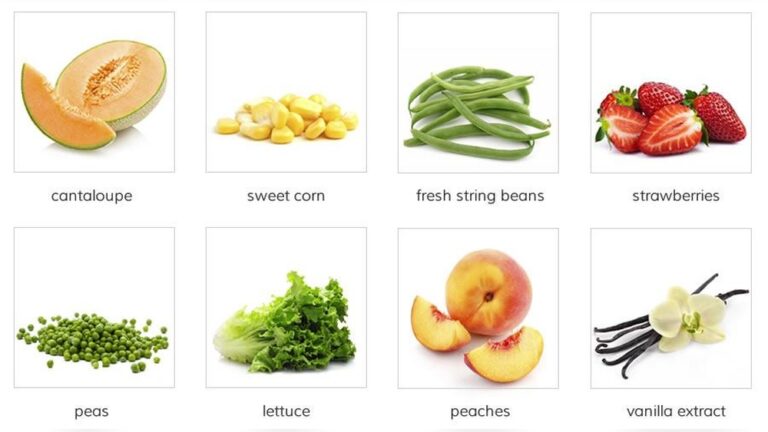Groundhogs Facts: Surprising Truths You Need to Know Today
Have you ever wondered what makes groundhogs so interesting? These furry creatures are more than just cute animals you might see in your backyard.
Knowing groundhogs facts can surprise you and change the way you see nature around you. From their unique habits to their role in folklore, groundhogs have stories that will grab your attention. Keep reading to discover facts that will make you look at these animals in a whole new light.
Your curiosity is about to be rewarded!

Credit: www.animalfactsencyclopedia.com
Groundhog Basics
Groundhogs, also known as woodchucks, are fascinating creatures. They belong to the rodent family and are well-known for their role in folklore. Understanding their basics helps appreciate their place in nature.
These animals are sturdy and built for digging. They live mostly underground and come out during the day. Their habits and features suit a life of burrowing and foraging.
Physical Features
Groundhogs have thick brownish-gray fur. Their bodies are chunky and strong, perfect for digging. They have short legs with sharp claws. Their small, rounded ears help them hear well. They measure about 16 to 26 inches long. Their tails are bushy and about 6 to 7 inches long.
Habitat And Range
Groundhogs live in North America, mostly in the eastern United States and Canada. They prefer open fields, forests, and areas near farmland. They dig burrows underground for shelter and safety. These burrows have multiple entrances and are quite deep. Groundhogs stay close to food sources and water.
Diet And Eating Habits
Groundhogs are mostly herbivores. They eat grasses, leaves, fruits, and vegetables. They enjoy clover, dandelions, and garden crops. Occasionally, they may eat insects or small animals. They spend a lot of time feeding to build fat for winter. Their eating habits help keep plants in balance.

Credit: www.livescience.com
Behavior And Lifestyle
Groundhogs show interesting behavior and lifestyle traits. They live mainly underground and have unique daily habits. Their actions help them survive cold winters and find food. Understanding their lifestyle gives us a closer look at these animals.
Burrowing And Home Life
Groundhogs dig deep burrows in the soil. These burrows serve as their homes and protection. They create tunnels with multiple chambers for sleeping and storing food. The burrows also have separate exits to escape predators quickly. Groundhogs spend most of their time inside these homes.
Hibernation Patterns
Groundhogs hibernate during cold months to save energy. They enter a deep sleep and lower their body temperature. Their heart rate and breathing slow down significantly. Hibernation can last up to five months. This helps them survive winter when food is scarce.
Social Interactions
Groundhogs are mostly solitary animals. They prefer to live alone except during mating season. Males and females meet briefly to mate. Mothers care for their young until they can live independently. Groundhogs use sounds and body movements to communicate threats or warnings.
Groundhog Day Tradition
The Groundhog Day tradition is a unique part of American culture. Each year, on February 2nd, people watch a groundhog to see if it sees its shadow. This event predicts the arrival of spring. The tradition brings fun and curiosity to the cold winter days. It blends folklore with community celebration.
Origins Of The Celebration
Groundhog Day began in the 1800s in Pennsylvania. German immigrants brought the idea from Europe. They believed animals could predict the weather. The groundhog was chosen because it hibernates during winter. This made it a natural symbol for forecasting spring. The first official event happened in Punxsutawney in 1887. It has continued there ever since.
Cultural Impact
The tradition has grown beyond Pennsylvania. Many towns hold Groundhog Day events with their own animals. The day appears in movies, TV shows, and books. It brings communities together for fun and entertainment. People enjoy the mix of superstition and celebration. The event also attracts tourists from around the world.
Accuracy Of Predictions
Groundhog Day predictions vary in accuracy. Studies show the groundhog is right about 39% of the time. Scientists say weather is too complex for simple forecasts. The tradition is more about fun than science. People enjoy the ritual and hope for an early spring. The groundhog’s shadow is a charming way to mark winter’s end.
Surprising Adaptations
Groundhogs have many surprising adaptations that help them live well in nature. These animals use special skills to find food, stay safe, and raise their young. Their unique ways make them strong survivors.
Survival Skills
Groundhogs dig deep burrows to hide from predators. These underground homes keep them safe from cold weather. They eat a variety of plants, which helps them find food all year. They can climb trees to escape danger quickly. Their sharp teeth help them chew tough plants easily.
Communication Methods
Groundhogs use sounds to talk to each other. They whistle loudly to warn about danger nearby. They also grunt and chatter to show feelings. Their body movements, like tail flicks, send signals too. These ways help them stay connected in their group.
Reproduction And Growth
Groundhogs have babies in early spring after hibernation. Mothers build warm nests inside burrows to protect young ones. Baby groundhogs grow fast and leave the nest by summer. They learn to dig and find food quickly. This fast growth helps them survive their first winter.
Groundhogs And The Ecosystem
Groundhogs play an important role in many ecosystems. They help keep nature balanced in several ways. Their activities affect plants, animals, and the soil. Understanding their role helps us appreciate these animals more.
Role In The Food Chain
Groundhogs are both prey and herbivores. They eat plants like grasses and berries. This helps control plant growth and spread seeds. Many predators, such as foxes and hawks, hunt groundhogs. This makes groundhogs a key food source in the food chain.
Impact On Soil Health
Groundhogs dig extensive burrows underground. These tunnels allow air and water to reach the soil. This improves soil quality and helps plants grow better. Their digging also mixes soil layers, spreading nutrients. This natural tilling benefits many other creatures.
Interactions With Other Species
Groundhog burrows provide homes for other animals like rabbits and snakes. They create safe spaces for many small creatures. Their presence affects local plant life by eating some plants. This changes how other animals find food and shelter. Groundhogs contribute to a balanced ecosystem through these interactions.

Credit: www.youtube.com
Common Myths And Facts
Groundhogs have many myths and facts surrounding them. People often confuse what is true with what is not. Understanding these can help us see groundhogs clearly.
Misconceptions About Groundhogs
Many think groundhogs predict the weather. This is a popular belief tied to Groundhog Day. People expect the groundhog to see its shadow. They say it means six more weeks of winter. This is just a tradition, not a scientific fact.
Some believe groundhogs are pests that destroy gardens only. Groundhogs do eat plants but also help the soil. Their digging can improve air flow underground. They are part of nature’s balance.
Scientific Findings
Scientists study groundhogs to learn about hibernation. Groundhogs lower their body temperature in winter. They slow their heartbeat to save energy. This helps them survive cold months without eating.
Groundhogs are also important for the ecosystem. Their burrows provide homes for other animals. They help control insect and plant populations. Science shows groundhogs play a key role in nature.
Groundhogs In Popular Media
Groundhogs appear in movies and cartoons often. They are shown as funny and clever animals. These portrayals make groundhogs popular with kids. Sometimes, media exaggerates their behaviors for fun.
Stories about groundhogs can shape what people believe. It is good to check facts behind these stories. Real groundhogs are interesting without the myths.
How Smart Pets Lover Can Help You with Groundhogs Facts
Exploring Groundhogs Facts Through Practical Learning
Understanding groundhogs goes beyond fun facts—it opens doors to meaningful learning experiences. By observing their behavior and lifestyle, you can gain insights into animal habits that resonate with broader ecological themes. For example, recognizing how groundhogs adapt to seasonal changes ties directly into their surprising adaptations and role within the ecosystem.
For families and pet enthusiasts alike, these connections can inspire curiosity about wildlife and responsible stewardship. At Smart Pets Lover, we believe every animal story, whether it’s a playful dog or a burrowing groundhog, enriches our appreciation for nature. Integrating knowledge about common myths and facts surrounding groundhogs helps develop critical thinking and separates folklore from science.
- Take note of how groundhogs prepare for hibernation—this can spark lessons on animal survival strategies.
- Discuss the Groundhog Day tradition as a cultural reflection of human-nature relationships.
- Use local wildlife observations to encourage outdoor exploration and environmental mindfulness.
If you’re eager to dive deeper into groundhog behavior or related animal care topics, connecting with local wildlife centers or visiting educational websites can be a great next step. For further guidance tailored to your family’s interests, feel free to reach out through our contact resources. After all, learning about animals, groundhogs included, is a wonderful way to foster empathy and confidence in caring for all creatures big and small.
Frequently Asked Questions
What Do Groundhogs Eat In The Wild?
Groundhogs primarily eat grasses, clovers, and dandelions. They also consume fruits, vegetables, and tree bark. Their diet varies seasonally, adapting to available plants. Groundhogs are herbivores and occasionally nibble on insects for extra protein.
How Long Do Groundhogs Live?
Groundhogs typically live 3 to 6 years in the wild. Some can live up to 10 years in captivity. Their lifespan depends on predators, habitat, and environmental conditions.
Why Do Groundhogs Hibernate In Winter?
Groundhogs hibernate to survive cold winters and food shortages. They enter a deep sleep, lowering their body temperature and heart rate. This helps conserve energy until spring when food is plentiful again.
How Do Groundhogs Affect Gardens And Farms?
Groundhogs can damage gardens by eating vegetables and fruits. Their burrowing can harm crops and disturb soil. However, they also aerate the soil, which benefits plant growth.
Conclusion
Groundhogs are interesting animals with unique habits. They live mostly underground and sleep through winter. Their role in nature helps plants and soil. People enjoy watching groundhogs, especially on special days. These facts show how nature works in simple ways.
Learning about groundhogs can be fun and easy. Their life helps us understand more about animals. A small creature with big importance. Groundhogs remind us to notice nature around us.







